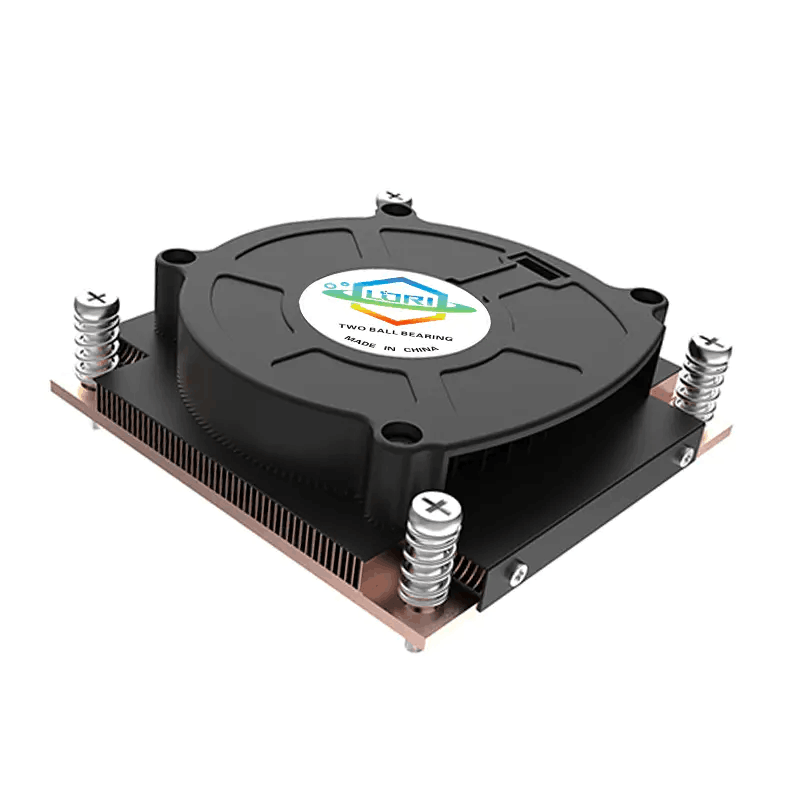With the rapid development of the handheld laser welding market, handheld laser welding machines using water cooling methods have been extensively marketed in recent years. Compared to traditional welding machines, the current water-cooled handheld laser welding machines are still perceived as too bulky in size and weight by customers, and frequent maintenance issues continue to trouble users. As users expect handheld laser welding machines to become more compact, lightweight, and maintenance-free, the key challenge with water-cooled handheld laser welding machines lies in their reliance on water cooling methods.
Currently, there is a notable demand in the industry for using air cooling methods for handheld laser welding machines, hoping to further reduce their weight and size and eliminate maintenance needs. This would enhance user experience and make the machines more similar to traditional welding machines.
01 The Heart of the Laser: Semiconductor Laser Chips
The most critical component in a handheld laser welding machine is the fiber laser. Regardless of the cooling method used, ensuring proper cooling of the fiber laser is essential. The core of this cooling is the semiconductor laser chip within the laser, often described as the heart of the laser. If the laser chip does not receive effective cooling, it increases the risk of chip failure and long-term power degradation, which impacts the lifespan of the handheld laser welding machine. In current technological conditions, the working life of a laser chip rapidly deteriorates with increasing temperature. The chip’s normal operating temperature needs to be maintained below 80°C, with a generally safe operating temperature around 60°C.
02 Understanding the Application of Forced Air Cooling in Handheld Laser Welding Machines
Forced air cooling technology involves transferring heat to an aluminum heat sink, which is then cooled by ambient air blown by a fan. Compared to water cooling technology, air cooling does not require additional equipment like water cooling tanks, reducing the equipment size and volume.

Precision Structure of Forced Air Cooling
- High-Efficiency Heat Sink: Made from high thermal conductivity aluminum, featuring a precise fin design to increase the heat dissipation area, ensuring rapid heat transfer to the external environment.
- Powerful Fan: Equipped with a low-noise, high airflow fan, optimizing airflow design to create strong air currents that accelerate the flow of air over the heat sink surface, quickly removing heat.
- Intelligent Temperature Control System: Integrates advanced temperature sensors and controllers to monitor the temperature of the laser chip and heat sink in real-time. The fan speed is automatically adjusted based on temperature changes to maintain optimal cooling under different operating conditions.
Technical Challenges and Solutions
To address the challenges of cooling in high-temperature environments, forced air cooling technology employs several strategies:
- Enhanced Fans: Development of more efficient, higher airflow fans to improve cooling capability.
- Heat Pipe Technology: Introducing heat pipes at critical points to utilize their high thermal conductivity and rapidly transfer heat to the heat sink, further enhancing cooling efficiency.
- Environmental Adaptation Design: Optimizing the airflow structure of the heat sink to improve its adaptability to different environmental temperatures, ensuring stable operation even under extreme conditions.
With its unique advantages and innovative design concepts, forced air cooling technology is gradually changing the landscape of the handheld laser welding machine market. It not only reduces equipment weight, simplifies maintenance processes, and improves work efficiency, but also meets the user demand for high performance and reliability through continuous optimization and upgrades. As technology progresses and application fields expand, forced air cooling technology is expected to play a more significant role in handheld laser welding machines, injecting new vitality into industry development.
Lori has been focusing on the heat sink field for nearly ten years, with advanced cooling technologies to provide you with one-stop cooling solutions. Feel free to contact us.






